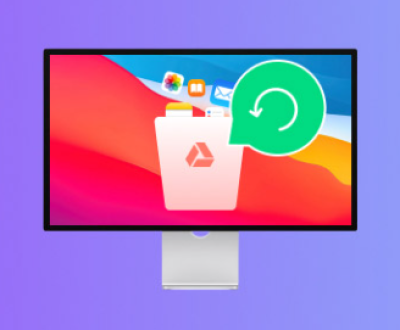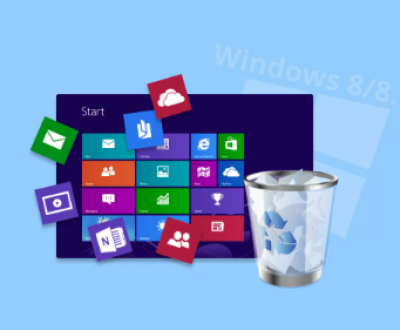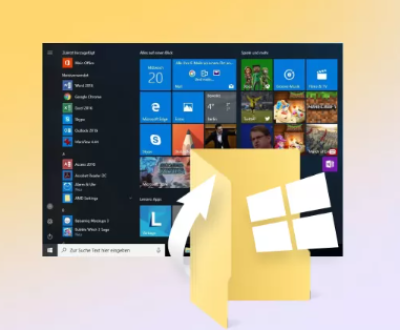Hard drives are essential components in computers, storing important data and files. Unfortunately, like any technology, hard drives are susceptible to failure due to reasons such as corruption, bad sectors, or even accidental damage. When this happens, your data may become inaccessible, or the drive might even stop working altogether. Many commercial hard drive repair tools exist, but they can be expensive.
Bad Sectors: Bad sectors are portions of the hard drive that are damaged and cannot be read or written to. These can occur due to physical damage, overheating, or power surges.
Corrupted File Systems: A file system can become corrupted due to improper shutdowns, virus infections, or other issues. This can make files inaccessible.

Partition Issues: Sometimes the partition table, which stores information about where data is located on the drive, can become damaged, leading to inaccessible data.
Drive Failures: Physical damage or failure due to wear and tear can make the drive unreadable.
Hard drive repair programs are useful for diagnosing these issues, repairing them, and even recovering data in some cases.
Criteria for Choosing Free Hard Drive Repair Programs
When selecting a free hard drive repair tool, there are several factors to consider:
Ease of Use: Some programs are user-friendly with intuitive interfaces, while others require technical knowledge.
Supported Operating Systems: Ensure the program is compatible with your system (Windows, macOS, or Linux).
Repair Capabilities: Some tools only diagnose, while others offer full repair functionality.
Data Recovery Features: If your drive is not functioning, some programs may help recover lost data.
Reliability: Choose programs with good reviews or a strong track record to ensure the tool will actually solve the issue without causing further problems.
Top Free Hard Drive Repair Programs
1. Panda Assistant (Windows)
Panda Assistant is an intuitive, efficient, and reliable software tool designed to assist users in recovering lost, deleted, or corrupted files from various storage devices, such as hard drives, USB drives, memory cards, and more. Whether you’ve accidentally deleted important files, experienced a system crash, or encountered a virus attack, Panda Assistant offers a simple, user-friendly interface to guide you through the data recovery process.
One of the standout features of Panda Assistant is its versatility. It supports a wide range of file types, including documents, images, videos, audio files, and archives, making it an excellent solution for personal and professional users. The software can recover data from damaged, formatted, or otherwise inaccessible drives, even in cases where other recovery tools may fall short.
Key Features of Panda Assistant:
Data Recovery for Multiple File Types: Panda Assistant supports the recovery of documents, photos, videos, music files, and more, ensuring that your critical data is not lost forever.
User-Friendly Interface: Designed with both beginners and experienced users in mind, Panda Assistant features an intuitive interface that simplifies the recovery process, requiring no technical expertise.
Fast and Efficient Scanning: Panda Assistant’s scanning process is quick and thorough, enabling users to preview lost files before recovery. This helps to save time and resources when locating the files you need.
Secure and Safe Recovery: The software ensures that the original data is not overwritten or damaged during the recovery process, giving users peace of mind when retrieving important files.
Supports Various Storage Devices: Panda Assistant is compatible with a wide variety of storage devices, including internal and external hard drives, USB drives, SD cards, and more, making it a versatile solution for different types of storage.
Deep Scan for Inaccessible Data: In addition to the quick scan feature, Panda Assistant offers a deep scan option for cases where data is harder to recover, such as when dealing with corrupted partitions or drives.
Preview Before Recovery: The ability to preview files before recovering them allows users to ensure they are retrieving the correct data, saving both time and storage space.
2. GParted (Linux, Windows via Live USB)
GParted is a powerful open-source partition editor, but it also has the ability to fix issues related to drive partitions.
Features:
Resize, format, and repair partitions.
Supports multiple file systems.
Includes a partition recovery tool.
How to Use:
Download and create a bootable USB or CD.
Boot from the USB/CD.
Use the GParted graphical interface to check and repair partitions.
Pros:
Free and open-source.
Comprehensive partition management.
Works with various file systems.
Cons:
Primarily for partition management, not full drive repairs.
Linux-based, which may require additional steps for Windows users.
3. CrystalDiskInfo (Windows)
CrystalDiskInfo is a useful tool for monitoring the health of your hard drive. It doesn’t repair the drive but can help diagnose issues related to drive health.
Features:
Monitors S.M.A.R.T. data to track the health of the drive.
Provides detailed information about temperature, read/write errors, and other metrics.
How to Use:
Download and install CrystalDiskInfo.
Run the program to view the status of your drives and see if there are any warnings.
Pros:
Easy-to-use interface.
Provides early warnings of potential drive failures.
Cons:
Does not repair drives—only helps diagnose issues.
Limited to reporting data rather than taking action.
4. HD Tune (Windows)
HD Tune offers a free version that can scan your hard drive for errors, check its health, and benchmark its performance.
Features:
Scans for bad sectors and errors.
Monitors temperature and drive health.
Provides performance benchmarking.
How to Use:
Download and install HD Tune.
Use the error scan function to check for physical issues on the drive.
Pros:
Offers both diagnostic and performance analysis tools.
Great for determining the overall health of your hard drive.
Cons:
The free version has limited functionality compared to the Pro version.
Does not repair the drive—only helps identify problems.
5. TestDisk (Windows, macOS, Linux)
TestDisk is an open-source tool primarily for recovering lost partitions and making non-booting disks bootable again.
Features:
Recovers lost partitions and rebuilds boot sectors.
Supports FAT, NTFS, ext2. and other file systems.
Powerful command-line tool.
How to Use:
Download and install TestDisk.
Run the tool and follow the on-screen prompts to analyze the drive and recover lost partitions.
Pros:
Can recover lost or damaged partitions.
Supports a wide variety of file systems.
Cons:
Command-line interface may be difficult for beginners.
Primarily a recovery tool, not a full repair tool.
6. EaseUS Data Recovery Wizard Free (Windows, macOS)
EaseUS offers a free version of their data recovery software, which can help repair and recover data from corrupted or damaged hard drives.
Features:
Recovers deleted or lost files from damaged or formatted drives.
Supports hard drives, SSDs, USB drives, and memory cards.
How to Use:
Download and install EaseUS Data Recovery Wizard.
Select the drive you want to scan and recover files from.
Preview and restore lost files.
Pros:
User-friendly interface.
Supports both data recovery and disk repair.
Cons:
The free version has a limited data recovery capacity (up to 2GB).
May not fix physical damage.
7. Macrorit Disk Partition Expert Free (Windows)
Macrorit offers a free partition management tool that includes some basic repair features.
Features:
Resize, move, split, and merge partitions.
Repairs damaged partition tables.
Supports multiple file systems including FAT32. NTFS, and EXT.
How to Use:
Download and install Macrorit Disk Partition Expert.
Use the partition repair tools to fix issues with damaged or corrupted partitions.
Pros:
Easy to use with a straightforward interface.
Free version has many useful features.
Cons:
Primarily designed for partition management rather than full drive repairs.
Does not handle bad sectors or physical damage.
Additional Tools and Utilities
Apart from the aforementioned tools, there are other specialized utilities worth mentioning:
HDD Low Level Format Tool: A free tool to perform low-level formatting, which can help reset your hard drive and fix certain issues.
AOMEI Partition Assistant: Another great partition tool for resizing, merging, and splitting partitions.
Disk Repair Tools for macOS: If you’re on a Mac, you can use Disk Utility, a built-in tool that helps with repairing disk permissions and checking for file system issues.
How to Repair Hard Drives with Free Tools
Identify the Issue: Before attempting repairs, use diagnostic tools (like CrystalDiskInfo) to determine whether the issue is with the file system, partitions, or physical damage.
Backup Your Data: If the drive is still accessible, it’s a good idea to back up your important files before attempting any repairs.
Run a Repair Tool: Choose the appropriate repair program based on your issue:
Use CHKDSK for basic file system errors and bad sectors.
Use TestDisk to recover lost partitions.
Use GParted for partition management.
Monitor the Drive: After repairs, continue to monitor the drive’s health using tools like CrystalDiskInfo or HD Tune.
About us and this blog
Panda Assistant is built on the latest data recovery algorithms, ensuring that no file is too damaged, too lost, or too corrupted to be recovered.
Request a free quote
We believe that data recovery shouldn’t be a daunting task. That’s why we’ve designed Panda Assistant to be as easy to use as it is powerful. With a few clicks, you can initiate a scan, preview recoverable files, and restore your data all within a matter of minutes.
Subscribe to our newsletter!
More from our blog
See all postsRecent Posts
- How to recover accidentally deleted files 2025-07-01
- How do i recover a file i accidentally deleted 2025-07-01
- How to recover an accidentally deleted file 2025-07-01

 Try lt Free
Try lt Free Recovery success rate of up to
Recovery success rate of up to









